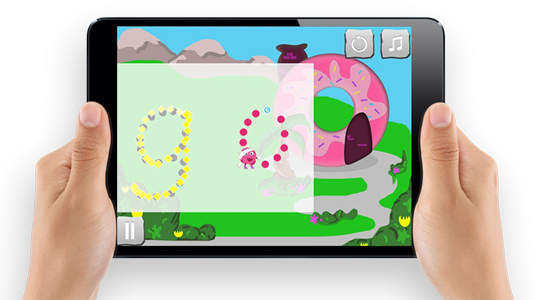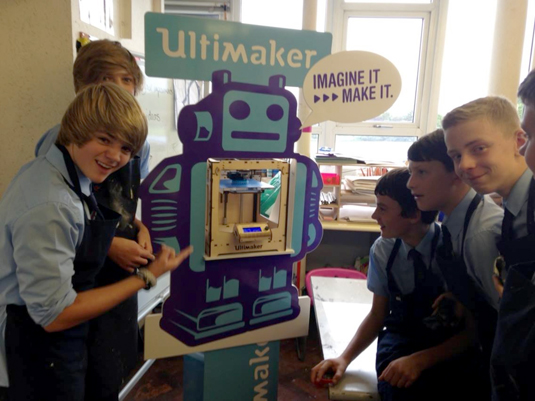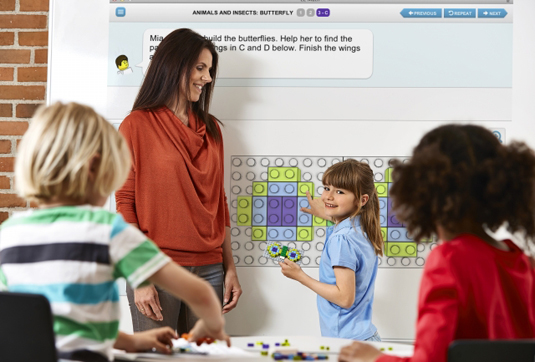How to design engaging digital products for kids
Whether it's an educational site, app or a physical product, you can help kids engage with your work by following some simple rules.
When it comes to designing for kids, there's one thing for sure – kids aren't just miniature adults. Rather, they present a completely different set of interaction, experience and usability conundrums.
To get a handle on how to design better digital products for kids we spoke to education professionals exhibiting at Bett 2015 – the world's leading event for learning technology.
Why is design so important for learning?
"Designing for kids is one of the most demanding fields there is," says Gary Beckett, Education Consultant at open source specialists, Precedence Technologies. "Kids are fantastic critics; the amount of technology at home and within education means that the look and feel of an object is almost as important as the job it performs."
The key is simplicity
Ben Dunford, Director, ePraise, a leading parent-teacher communication platform said: "Keep things simple – students don't like clutter and are easily distracted. Don't add irrelevant things to the screen, and lay things out in a sensible way with plenty of space" suggests Ben.
"It's also important to remember that kids grow up very quickly – something designed for a 15 year old may need to look and work differently to something designed for a 10 year old. Be as specific as possible about your intended audience, in order to get the best outcomes."
Filippo Yacob, CEO, connected toy specialist Primo, agrees that simplicity is vital. He advises: "Children are kings at cutting through all the fudge; stick to a simple story, it's more honest. I'd also say that it's important to make it 'un-master-able' – the best toys and games are easy to learn and impossible to master, giving you the opportunity to re-define your own long term goals and overall narrative."
Encourage continued learning outside of the classroom – this is where the power of digital learning really comes into play
Create an element of surprise

According to Ingrid Connors, Founder and Director of mobile app, variety and surprise are key to keeping children engaged. "At Monster Phonics we found the key is to create a dynamic world. Children love surprises. They want to see something funny or unusual.
Get the Creative Bloq Newsletter
Daily design news, reviews, how-tos and more, as picked by the editors.
"It's important to connect with a child's experiences in the real world too," explains Connors. "Children respond best when they can clearly see that they are making progress. Small rewards along the way are vital. The reward system should allow the children to make choices, customising their online world."
Help foster a sense of ownership

Paul Croft, Director of UltimakerGB and Founder of CREATE Education Project believes in participation from the children to keep them invested.
He explains: "With the maker movement sweeping the globe and brands like Nike allowing you to personalise products, it's not just kids who are getting excited about the transition from being consumers to prosumers!"
"Never before have we had the opportunity to get involved with designing our own products as we do now. Children love to be involved in creating and putting their unique stamp on something. What better way to keep kids invested than to give them true 'ownership' and a community to share with?"
Remember to use video
Paul Howell, founder at Stop Motion Pro, specialist in animated films, believes video demonstration is another great way to get children to engage with digital products.
He comments: "Supporting your product by creating student centric video demonstrations is a great way to engage kids in schools. Showing actual students solving creative challenges is a great way to help other kids see how your products will be relevant to them and their projects. They very quickly apply the ideas from the instructional videos to their own work, then everyone wins."
Picking the right technology

Zulfi Baig, Operations Director, iBoardTouch, provider of interactive touchscreens stresses the importance of the device itself, not just the design.
"Enhancing learning and engagement in the digital classroom can be achieved with investment in the right piece of tech, used in the right way," says Baig. "Devices must offer diversity in collaboration and interaction connecting students and teacher, student and student; and student and interactive board with any type of BYOD device."
Learning happens at home too
It is important that children continue to be engaged in digital products outside of the classroom, to ensure that the learning process continues. Simon Davenport, Senior Direct Marketing Manager, LEGO Education Europe concludes by explaining why this is so important: "Encourage continued learning outside of the classroom – this is where the power of digital learning really comes into play.
"By establishing a two-way interaction with parents, children can take their classroom experiences into the home and work with parents to keep the learning journey alive."
Words: Louisa Wetton
Bett 2015 is free to attend and takes place from Wednesday 21 to Saturday 24 January 2015 at ExCeL London. You can also follow the conversation on Twitter.

Thank you for reading 5 articles this month* Join now for unlimited access
Enjoy your first month for just £1 / $1 / €1
*Read 5 free articles per month without a subscription

Join now for unlimited access
Try first month for just £1 / $1 / €1

The Creative Bloq team is made up of a group of art and design enthusiasts, and has changed and evolved since Creative Bloq began back in 2012. The current website team consists of eight full-time members of staff: Editor Georgia Coggan, Deputy Editor Rosie Hilder, Ecommerce Editor Beren Neale, Senior News Editor Daniel Piper, Editor, Digital Art and 3D Ian Dean, Tech Reviews Editor Erlingur Einarsson, Ecommerce Writer Beth Nicholls and Staff Writer Natalie Fear, as well as a roster of freelancers from around the world. The ImagineFX magazine team also pitch in, ensuring that content from leading digital art publication ImagineFX is represented on Creative Bloq.
